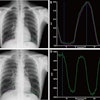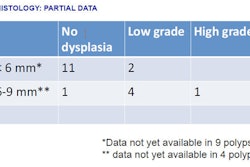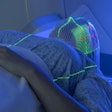
CHICAGO - The aluminum can industry's attempt to keep those ubiquitous tab openers from being inadvertently swallowed hasn't prevented the youth of America from accidentally ingesting them, causing challenges for radiologists.
While these so-called stay-tabs were developed to prevent littering and ingestion of the tabs, ingenious pediatric patients still find ways of swallowing them.
"We probably need some changes in can design," said Dr. Lane Donnelly, radiologist-in-chief at Cincinnati Children's Hospital Medical Center, but he admitted he doesn't have any ideas that will prevent children from swallowing the tabs.
Donnelly identified 19 incidents at his facility in the past 16 years, in which children as young as 1 year and as old as 18 years presented at the emergency department after reporting to have swallowed a tab, having been witnessed swallowing the aluminum tabs, or reporting abdominal discomfort that might have occurred following accidental ingestion.
 |
| Dr. Lane Donnelly, radiologist-in-chief at Cincinnati Children's Hospital Medical Center. |
In most cases, radiologists were unable to identify the tab on x-rays, Donnelly said. Only in four of the 19 cases were the devices spotted on x-rays. He said that all the cases resolved without interventions being needed, although there was the risk of internal laceration because of the rough edges on the breakaway tabs. He also said there was risk of the tab causing obstructions.
According to Donnelly, the aluminum can industry changed can design from the pull-tabs due to concerns about environmental damage being caused by littering -- and following a report of three cases of accidental ingestion of the tabs.
"We really don't know how many pull-tab ingestions occurred," Donnelly said in a press briefing at the RSNA 2009 annual meeting. "Our findings raise the possibility that the redesign of beverage cans may not have reduced the number of ingestions."
Donnelly and colleagues identified the 19 cases at his institution over a period of 16 years. All the cases involved patients who swallowed a tab or were reported to have swallowed a tab and underwent x-ray screening. He said that if 19 cases were reported at just his facility, the actual number of cases around the country might be far larger.
While noting that the tabs are designed to stay on the can so that they won't be swallowed or add to national litter, he demonstrated that the tabs are easily separated from the cans with a couple of twists.
One on the patients was sent home with instructions not to suck on the tabs when drinking beverages.
Most of the children who swallowed the tabs were older than age 5 -- only four cases of children younger than 5 years were reported.
Dr. Joseph Tashjian, president of St. Paul Radiology in Minnesota, and moderator of the press briefing, said that with the original pull-tabs, surgery had been required to remove the devices. "The positive thing is that all these patients were able to be managed conservatively," he said. However, Tashjian suggested further studies were needed to improve safety further.
Use of other imaging modalities such as CT was not warranted, as the cases were resolved without sequelae, Donnelly said.
By Ed Susman
AuntMinnie.com contributing writer
December 1, 2009



















